
Hinged rail stairlifts are those which have a rail which moves to avoid a doorway or corridor. Here’s the two main types of straight rail showing both: one with a hinge and one without. On the left is a stairlift rail without a hinge, and on the right is a similar rail with a hinge.
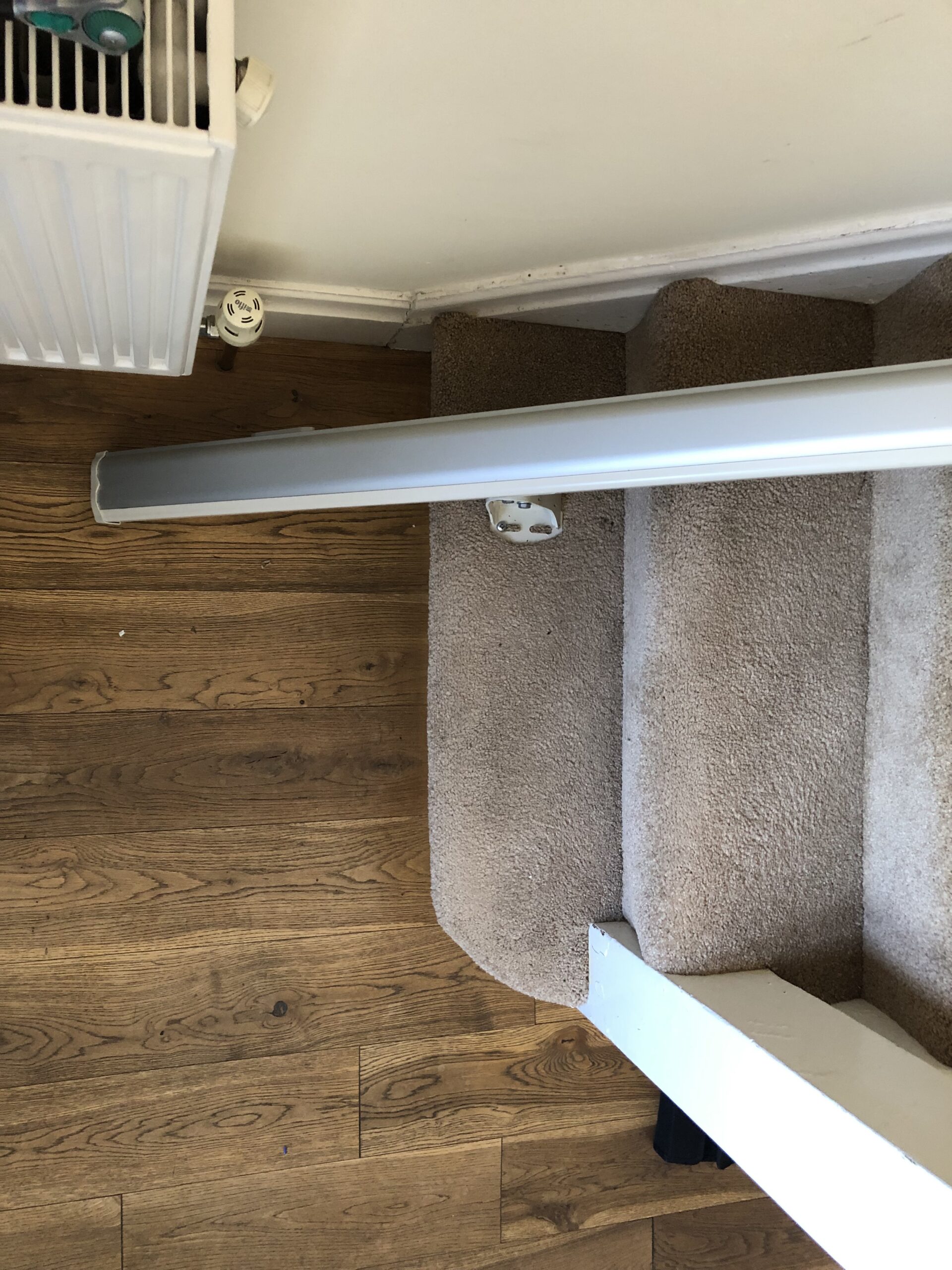
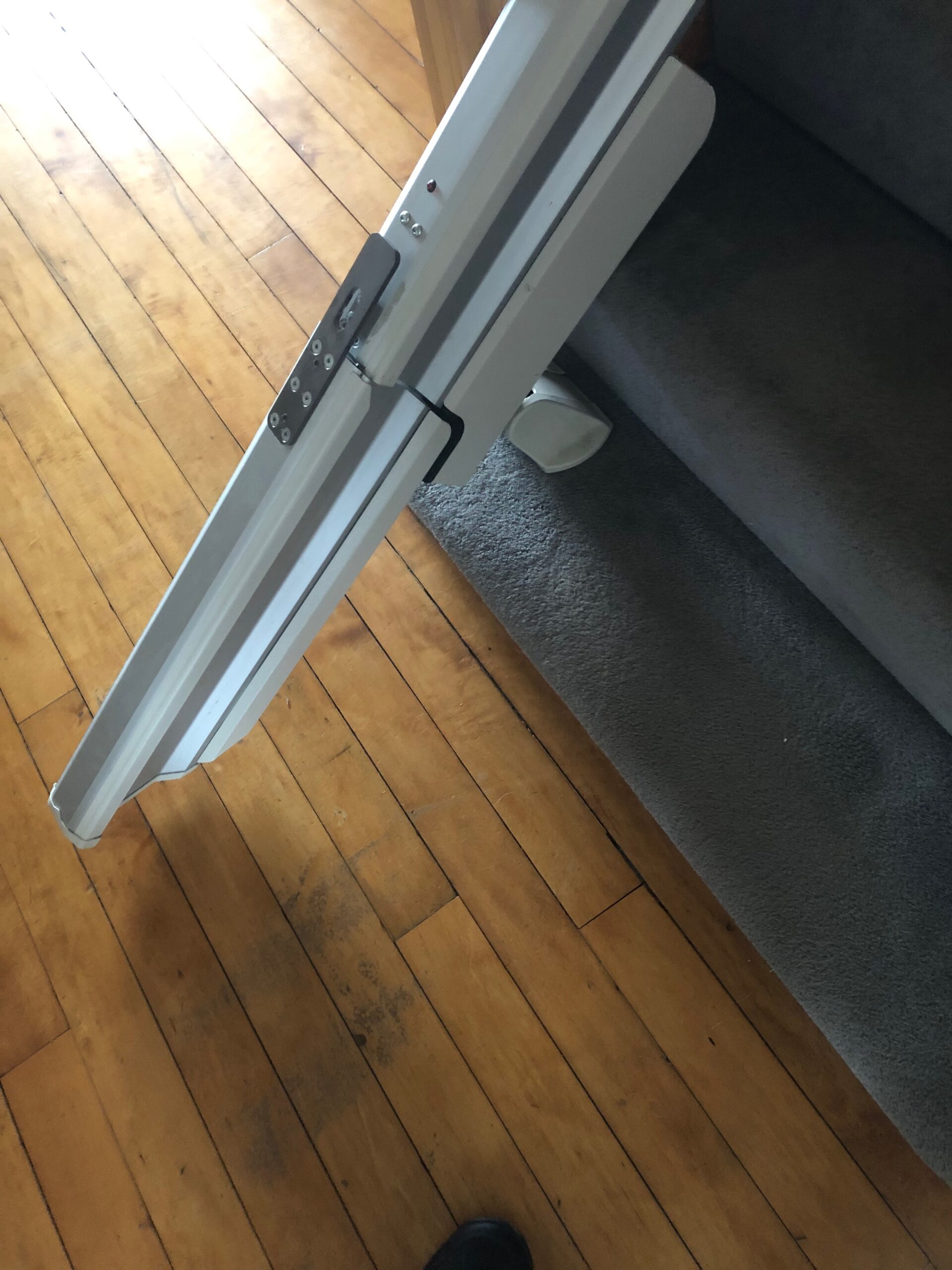
As the stairlift passes the hinge point, the hinge follows the stairlift up the rail and folds over itself. This clears the passageway, or unblocks a doorway at the base of the stairs. These stairlift hinges are useful when there’s an obstacle. However, having another moving part on a stairlift does add a potential problem should there be an issue. So we try and avoid using these if a safer alternative is available.

Hinged Rail Stairlifts – Drop “Nose” Stairlift Rails
An alternative to the hinged rail stairlifts option is the “drop nose” rail. This is a suitable alternative which doesn’t involve a moving part. The drop nose rail can be placed in a corridor or to avoid a doorway. Because there’s no moving parts, there’s less that can do wrong. In the case of an emergency, it’s important not to block any escape exits. That’s why we will sometimes recommend this as an option rather than a hinged rail stairlift.
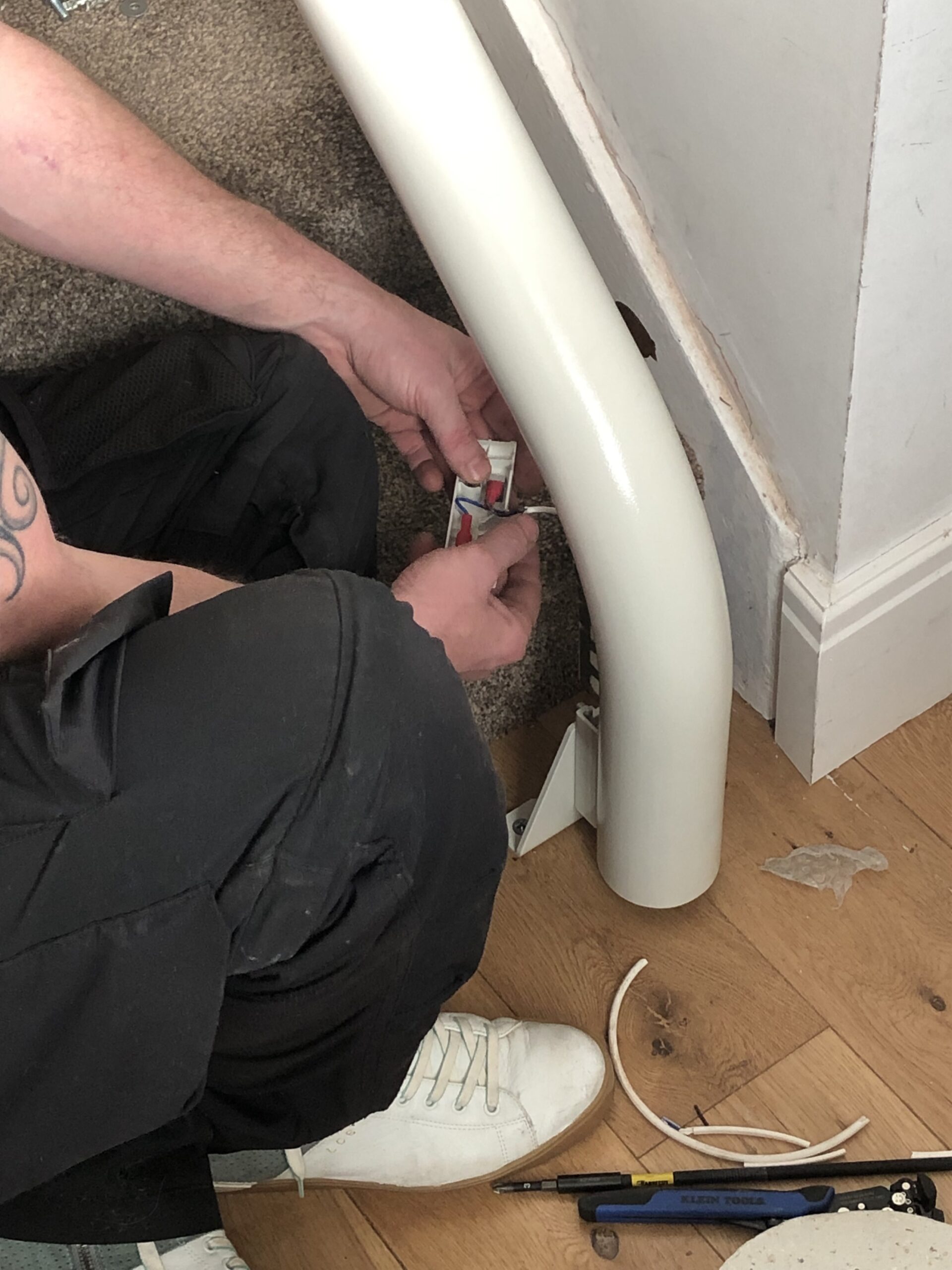

Here’s another drop nose rail which cleverly avoids the kitchen door and the lower floor corridor. In this installation, a hinged rail stairlift wouldn’t have had room for manoeuvre, as this was a very difficult setup! Checkout the case study for this one as it was a very narrow staircase.

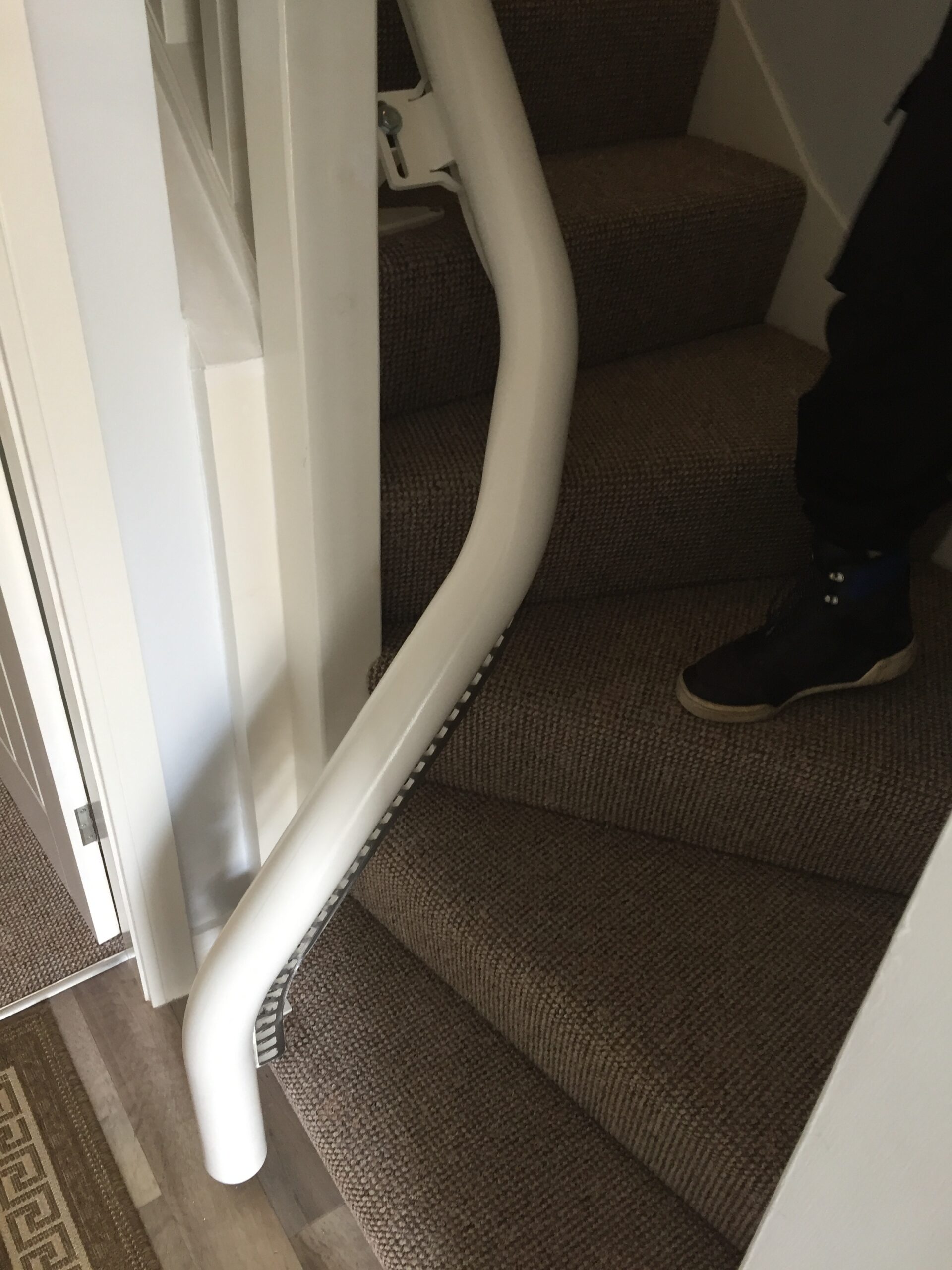
Hinged Rail Stairlifts Versus Drop Nose Stairlifts
Traditionally, the powered rail was the remit only of straight stairlifts, because the powered feature was a part of a continuous, straight rail. However, certain curved stairlifts now have this functionality, such as the hinged rail for the Handicare 2000 which caters for curved staircases, which may have a door at the base of the stairs, for example.
We prefer to use the Flow stairlift range for difficult fittings like these for a couple of reasons:
- Fewer moving parts means less can go wrong
- In the case of emergency the rail may fail to fold, blocking an exit
- There’s a danger of injury through getting a hand/finger trapped in the moving rail
However, we have found the moving rails we use to be very reliable. But we would still consider the environment and other house users before installing a moving rail which folds.
We like also our drop nose rail models which remove the necessity for a moving rail. They are much safer and less can go wrong!
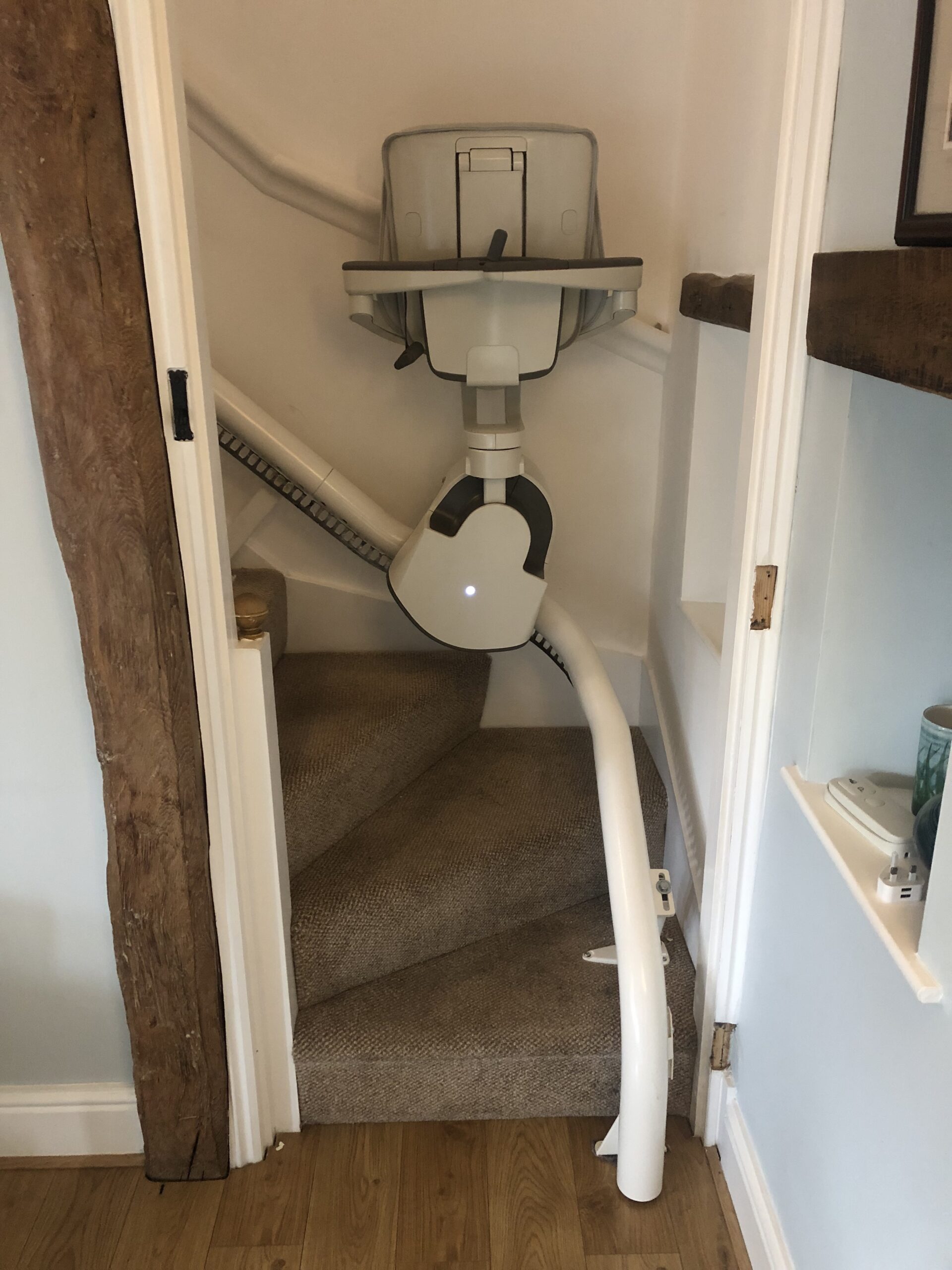
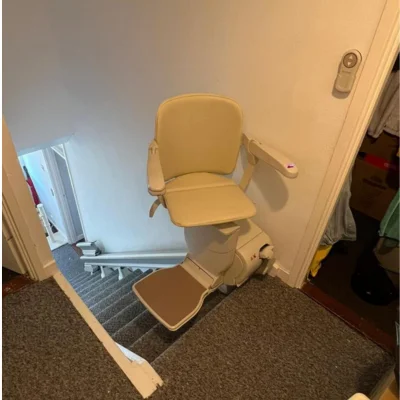
Summary
A hinged rail stairlift is a useful choice when there’s a door at the base of the stairs. But you can also use a “drop nose” rail which avoids the problem too. We like the hinged stairlift but it can cause obstructions for other house users and present a potential problem in the case of an emergency – with a blocked exit for example.
If there’s any issue with power, or the electronics, a hinged rail becomes more of a problem than a static rail. That’s why we will sometimes recommend the drop nose rail option instead of a hinged rail.
For more information call 0800 046 3438 or visit our contact page here.
You can also see some of our installations here.

